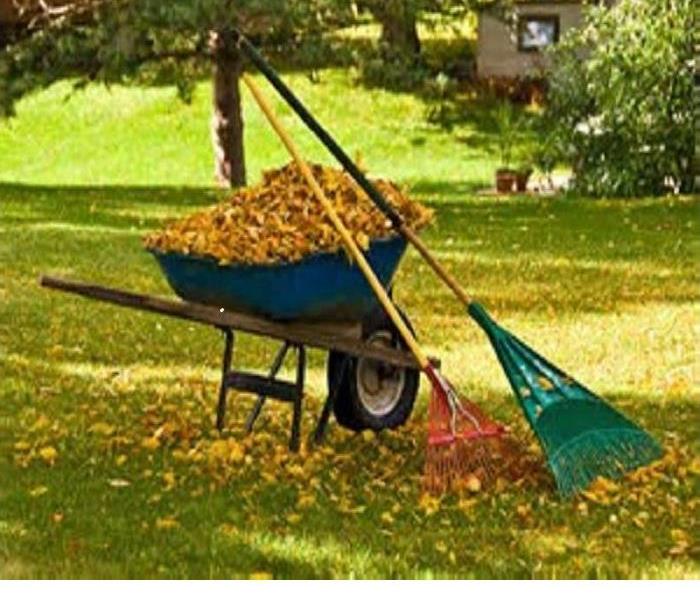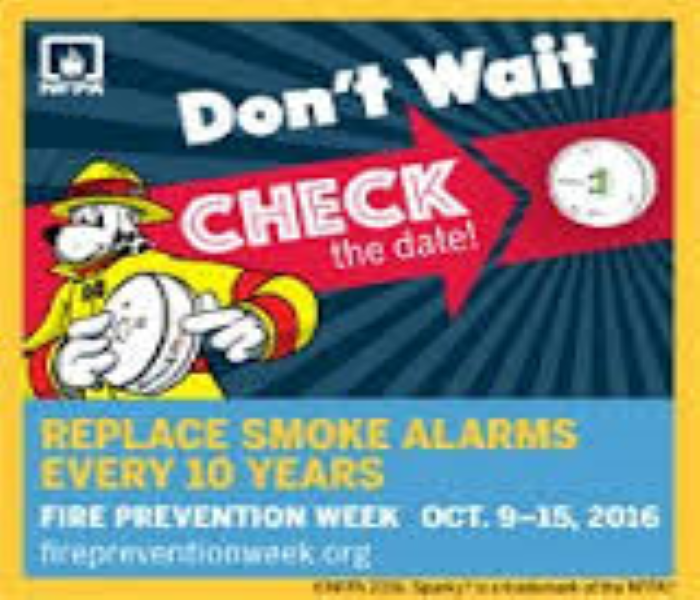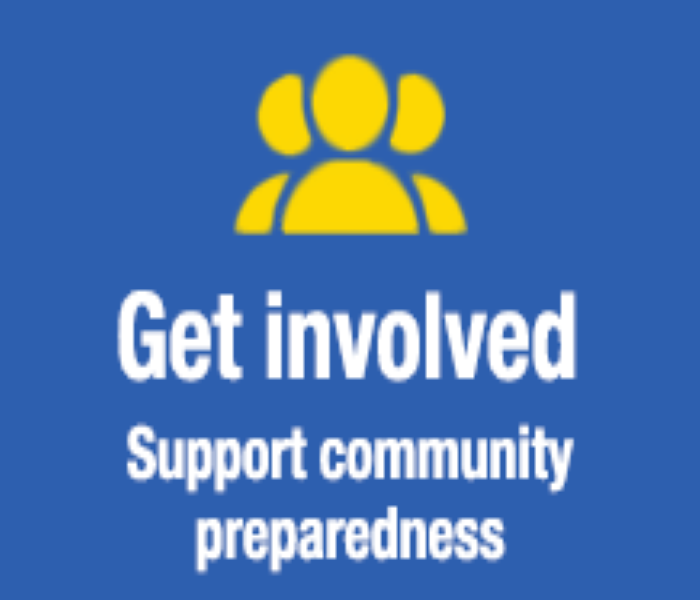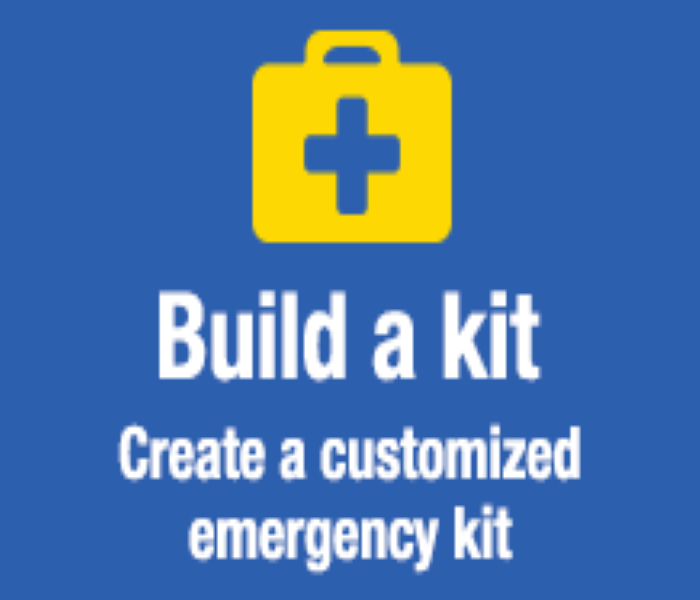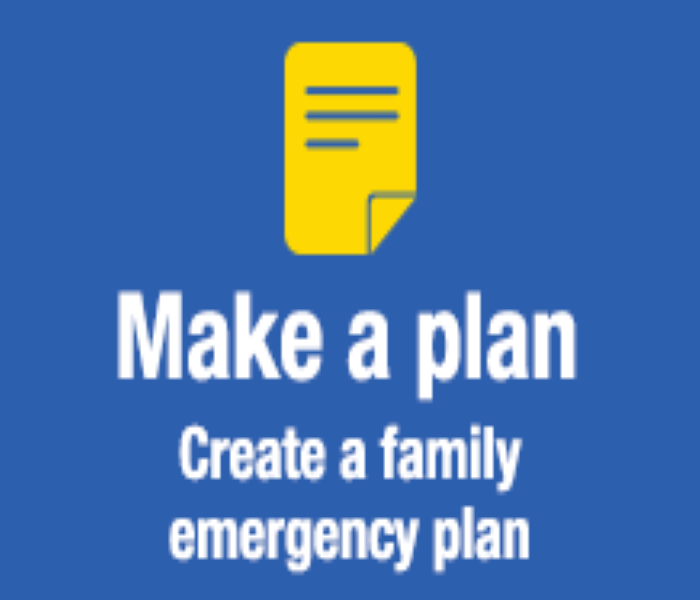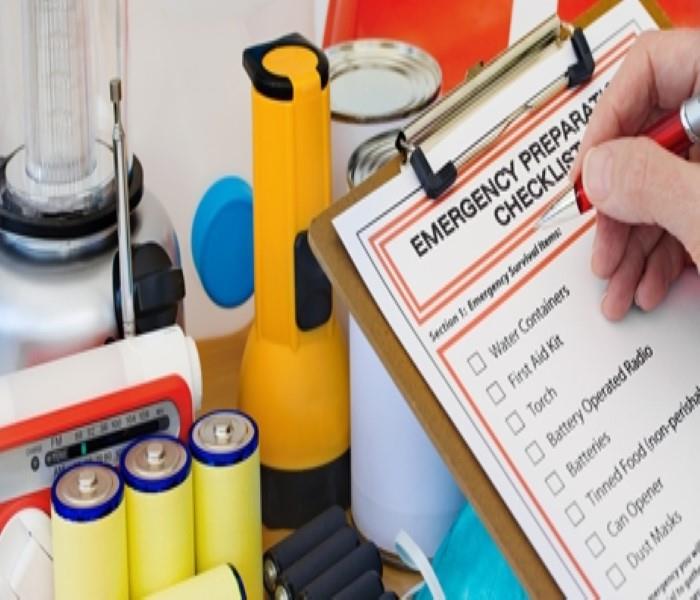Recent General Posts
What exactly IS an air mover?
12/26/2023 (Permalink)
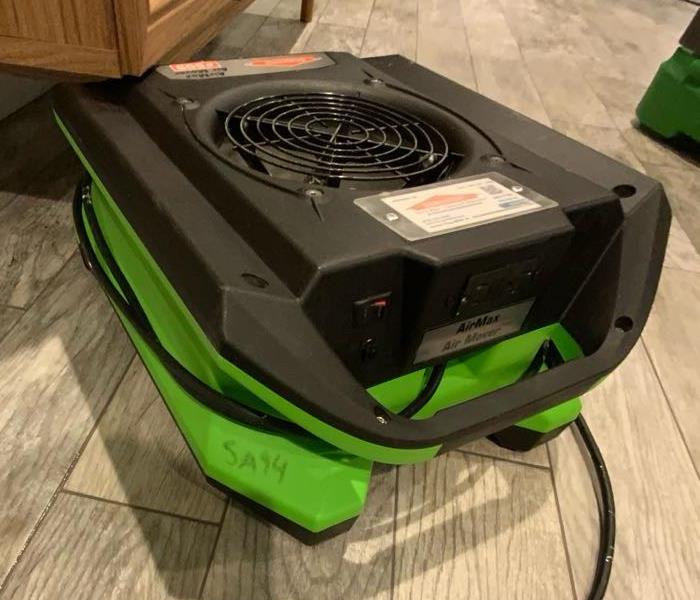 Air movers are designed to produce a high volume of airflow at a relatively low velocity.
Air movers are designed to produce a high volume of airflow at a relatively low velocity.
An air mover, in the context of restoration and cleanup services like those provided by SERVPRO®, is a specialized piece of equipment designed to facilitate the drying process in water-damaged or flood-affected areas. It is also known as a "blower" or "floor drying fan." The primary purpose of an air mover is to increase the evaporation of moisture from wet surfaces, helping to expedite the drying of structures and contents in a building.
Key features and functions of an air mover include:
High Airflow:
- Air movers are designed to produce a high volume of airflow at a relatively low velocity. This helps to create turbulence and enhance the evaporation of moisture from wet materials.
Compact and Portable:
- Air movers are typically compact and portable, allowing them to be easily positioned in various locations within a building. This flexibility is crucial for targeting specific areas that require drying.
Stackable Design:
- Many air movers have a stackable design, enabling them to be efficiently stored and transported in larger quantities. This is important for large-scale restoration projects.
Versatility:
- Air movers can be used in conjunction with other drying equipment, such as dehumidifiers, to create an effective drying system. This combination helps control humidity levels and promotes efficient moisture removal.
Directional Airflow:
- Adjustable vents or louvers on the air mover allow for the direction of airflow to be controlled. This feature is useful for targeting specific surfaces or areas that need focused drying.
Drying Carpets and Flooring:
- Air movers are commonly used in the restoration of water-damaged carpets and flooring. By directing airflow over wet surfaces, they help to evaporate moisture and prevent the growth of mold and mildew.
Speeding up Drying Time:
- The use of air movers can significantly reduce the drying time compared to natural air drying alone. This is crucial for minimizing damage and preventing secondary issues associated with prolonged exposure to water.
SERVPRO® and other restoration professionals often use air movers as part of a comprehensive strategy to mitigate water damage. The specific type and size of air mover chosen depend on factors such as the extent of the damage, the affected materials, and the layout of the affected area.
Emergency Plans for Commercial Clients
3/29/2023 (Permalink)
 SERVPRO's ERP is an essential tool for commercial clients in the Lynn area!
SERVPRO's ERP is an essential tool for commercial clients in the Lynn area!
SERVPRO is a company that provides disaster restoration and cleaning services for both residential and commercial properties. One of the ways SERVPRO helps businesses prepare for emergencies is through their Emergency Ready Plan (ERP).
The SERVPRO Emergency Ready Plan is a comprehensive document that helps businesses prepare for disasters before they occur. The ERP provides businesses with a step-by-step guide on how to respond in the event of an emergency. Here are some of the key elements of the SERVPRO ERP for commercial businesses:
Assessment: The first step in the ERP process is to conduct an assessment of the business. This includes identifying potential risks and hazards, as well as evaluating the company's current emergency preparedness plan.
Plan Development: Based on the assessment, SERVPRO works with the business to develop a customized emergency response plan. This plan includes important information such as emergency contacts, evacuation routes, and key personnel who will be responsible for implementing the plan.
Communication: Communication is a critical component of any emergency response plan. The ERP includes instructions on how to communicate with employees, customers, and vendors in the event of an emergency.
Training: SERVPRO provides training to the key personnel identified in the plan, as well as other employees, on how to respond in the event of an emergency.
Documentation: The ERP includes important documentation such as emergency contact information, insurance information, and building plans.
Ongoing Maintenance: The SERVPRO ERP is not a one-time event. The company provides ongoing maintenance and updates to ensure that the plan remains current and effective.
Overall, the SERVPRO Emergency Ready Plan is a comprehensive and customizable plan that helps businesses prepare for emergencies. By working with SERVPRO, businesses can be confident that they are ready to respond quickly and effectively in the event of a disaster.
FALL YARD CLEANING TIPS
8/25/2017 (Permalink)
Aaaah, autumn. The kids are headed back to school, the leaves are turning, and a chill is in the air. If you're like most homeowners, fall also means an opportunity to spruce up your yard and cut down on the work you'll need to do when the weather turns warm again.
It doesn't matter if you're a seasoned landscape professional or somebody who just wants their yard to look as good as it can with as little work as possible, everyone can benefit from backyard fall cleanup. A little bit of work in the fall will really pay off when spring rolls around.
- Rake those leaves. Once the snow flies, an unraked layer of leaves can get matted down over the turf and smother it all winter long. Raking or using a mulching mower in the fall helps avoid dead patches in the spring. But don't worry about getting every last leaf, especially in the garden. They help insulate plants, and as they decompose, they provide valuable nutrients.
- Feed the grass. Fertilizing in the fall is like a day at the spa for your lawn. Using a slow-release fertilizer allows the grass to soak up nutrients and - just as important - spend the cool days and nights of autumn recovering from summer heat and stress. And building a healthy, rejuvenated lawn is one of the best ways to protect against heat, cold, drought, insects and other stresses.
- Weed all about it. Weeding in the fall is probably the most valuable thing you can do to prepare for spring, and it's one that many people overlook. The good news: Pulling weeds used to be a backbreaking chore, but tools like the Weed Hound have come a long way from the tiny weeding forks of "the good old days." There's no reason to get down on your hands and knees and gouge at the turf. All you do is place the tool over the weed, step lightly on the footrest, and pull.
- Remove thatch build-up. A build-up of aboveground roots called thatch prevents sunlight, oxygen and moisture from getting to the nutrient-hungry soil below. But it's easy to remove, especially if you don't wait until it overwhelms the yard. Just go at the yard with a dethatching rake in early fall, or for an easier - but more expensive - option, rent a power dethatcher.
- Aerate. Heavy use throughout the summer can cause soil to become compacted. Perforating your lawn with small holes helps reduce compaction and lets water, air and fertilizer get down to the soil, which strengthens the grass plant's root structure. For smaller yards, a manual aerating tool that removes plugs from the turf while you step should be just fine. If you've got a larger yard, consider renting a power aerator.
- Water trees and shrubs. Dehydration during the colder months is an all-too-common cause of tree damage, but it's easily preventable. To sustain them over the long winter, it's important to give trees a drink before putting them to bed. After they go fully dormant - but before the ground freezes - use a soaker hose or root irrigator to water them thoroughly.
- Clean out your garden. Fruits and vegetables left in the garden can rot all winter long, and provide a comfy home for insect eggs. Gross? Not as gross as they'll be in the spring. Now's the time to get rid of diseased plants, too, but keep them out of the compost pile so the problem doesn't spread to the rest of your garden next year.
- Plant spring bulbs. Fall is not all about closing up shop. It's also the perfect time to plant spring flowering bulbs like daffodils and tulips. But pay attention to the weather in your area; planting too early can cause bulbs to sprout before winter, and planting them too late can mean their roots don't have enough time to develop before the ground freezes.
- Give your tools a tune-up. When it comes time to put away the backyard tools for the season, don't just shove them into the garage or shed. Spend a few minutes wiping them down and removing debris and dirt, then apply a light layer of oil to keep them from rusting over the winter. That way they'll be all set to go again come spring.
Old Man Winter may be on his way, but with a little work now, you can lay the groundwork for a happy, healthy backyard that's ready to thrive next season.
Don’t Wait: Check the Date! Replace Smoke Alarms Every 10 Years!
9/27/2016 (Permalink)
You replace your cell phone, your lightbulbs – even your toothbrush. But when was the last time you replaced – or thought about replacing – your home's smoke alarms?
While smoke alarm lifespan and sensing technology has vastly improved in recent years, the fact remains that all smoke alarms expire after 10 years. However, nearly a quarter of Americans (23 percent) have either never replaced their smoke alarms – or have not done so in more than six years. This, coupled with the fact that three out of five home fire deaths occur in properties without working smoke alarms – often due to missing alarm batteries or expired alarms – is cause for concern for local fire and safety officials.
"Many people assume that because they have smoke alarms in their homes, they're automatically protected in the event of a fire," said Lorraine Carli, vice president of Outreach and Advocacy at NFPA. "In reality, smoke alarms need to be installed, maintained and tested regularly to ensure that they're working properly. Part of that effort includes knowing how old your smoke alarms are, because smoke alarms don't last forever."
NFPA 72, National Signaling and Fire Alarm Code®, requires that residential smoke alarms be replaced at least every 10 years, but because the public is generally unaware of this requirement, many homes may have smoke alarms well past their expiration dates. To find out whether it's time to replace the smoke alarms in your home, simply look on the back of the alarms where the date of manufacture is marked. The smoke alarm should be replaced 10 years from that date (not the date of purchase or installation).
If alarms are due for replacement, consider upgrading your level of protection with devices containing 10-year sealed batteries, which offer tamper-proof, hassle-free protection while eliminating the need to replace batteries for the life of the alarms. For ultimate home safety, select combination smoke/carbon monoxide (CO) alarm models for complete protection from the threats of smoke and CO. A variety of smoke alarms, including hardwired, combination and 10-year battery-powered models, are available to meet specific needs and local requirements.
National Preparedness Month: Week Four – Get Involved
9/23/2016 (Permalink)
September is National Preparedness Month
Week Four – Get Involved
Build a more resilient community by getting involved and helping your community prepare for, respond to, and recover from the next disaster. There are many great opportunities to make important contributions including volunteering, donating or helping our neighbors and community.
Volunteer
Donate
- Donate cash to a recognized disaster relief organization.
- Donate goods that are specifically requested or needed by recognized organizations.
- Learn more about how to donate responsibly: Donations and Volunteers
Help your Neighbors
- Be a good neighbor. Check on family, friends, and neighbors, especially the elderly, those who live alone, those with medical conditions and those who may need additional assistance.
- Start a community preparedness project with the Corporation for National & Community Service toolkit.
National Preparedness Month: Week Three – Build an Emergency Kit
9/22/2016 (Permalink)
September is National Preparedness Month
Week Three – Build an Emergency Kit
Build an Emergency Kit:
Having an emergency supply kit is an essential component of personal and family preparedness Emergency kits should include essentials items that will help sustain you and your family for up to three days in the event you are isolated in your home without power during disaster.
First, think about essential items you will need for basic survival: water, food, warmth, clean air, and necessary medications, or medical equipment. Additionally, utilities and basic services such as electricity, gas, water, sewage treatment, and telephones may be cut off for days or weeks. Your supply kit should contain items to help you manage during these outages. Make sure your emergency kit is customized to meet the unique needs of your family.
At a minimum your kit should include:
- Water: Bottled water (one gallon per person/per day for at least three days), water purification tablets
- Food: At least a three-day supply of non-perishable foods that do not need cooking (ready-to-eat canned meats, fruits, vegetables, or juices, protein or granola bars, cereal, peanut butter, dried fruit, nuts, crackers, baby food, comfort foods)
- Tools and Supplies: Manual can opener, Radio (battery-powered or hand crank), flashlight or lantern, extra batteries, cell phone with charger, wrench, pliers, and other basic tools
- Personal Items: Prescription medications (two-week supply), personal hygiene items, eyeglasses, contact lenses, dentures, extra batteries or supplies for medical equipment, change of clothes, sturdy shoes
- Pets: Collar, leash, harness, crate, food, bowls, current photo, license and medical information
- Documents: Insurance policies, bank account records, identification cards (IDs), medical information, and other copies of important documents
- Money: Extra cash and traveler’s checks (ATMs may not work during a power outage)
- Other Items: First-aid kit, emergency whistle, waterproof matches/lighter, local area maps, diapers, wipes, formula, and baby food and supplies (if needed)
Also consider adding:
- A watch or clock
- Household chlorine bleach, which can serve as an emergency disinfectant of drinking water
- Camp stove or grill with fuel or canned heat, neither of which should be used indoors
- Disposable plates, cups, and utensils
- Duct tape, plastic sheeting or tarp
- Seasonal items to protect against the elements
- Books, games, puzzles, and other comfort items
- Sleeping bags or blankets.
National Preparedness Month: Week Two - Make A Plan
9/19/2016 (Permalink)
September is National Preparedness Month
Week Two – Make A Plan
When an emergency or disaster occurs, will you be ready? It is critical that you create a family disaster plan to keep you and your family safe, protect your property, and build your community’s resilience.
Develop a plan with the members of your household to prepare for what to do, how to find each other, and how to communicate in an emergency. Be sure your plan addresses the special and/or medical needs for you and your family.
You should:
Establish Meeting Locations
Select two family meeting locations where your family can reunite after a disaster.
- Choose one close to home
- Second farther away, in case you are asked to evacuate or can’t return to the area.
Develop an Emergency Contact Plan
Ask an out-of-state friend or relative to serve as your family’s emergency contact. After a disaster, it is sometimes easier to call long distance to unaffected areas.
- Provide every family member with the name, address, and phone number of the emergency contact and make sure each family member has a cellphone or a prepaid phone card.
- Inform your emergency contact of any family member’s special needs or medical issues.
List emergency contacts in cellphones as “ICE” (in case of emergency), which will make it easier for emergency management personnel to contact the right person in case of an emergency responder needs to make a call on your behalf.
Identify alternate communications methods:
- Show all family members how to text message, as it may be easier to send a text than make a call during an emergency.
- Learn how to use social media, which can be an effective tool to let friends and family know your location and status.
- You can use the American Red Cross's Safe and Well service to register yourself as “safe and well” or search for loved ones after a disaster.
Plan How to Evacuate
Identify and practice how you will exit your home.
Establish possible evacuation routes to ensure you are able to get to your designated meeting location(s).
Identify available modes of transportation.
Make arrangements with family, neighbors, friends, or local government if you don’t have personal transportation.
If you need assistance, contact your local public safety official to make them aware of your needs.
Plan How to Shelter in Place
Designate safe room(s) within your home. They should have:
- as few windows or doors as possible; and
- access to television, radio, and telephones.
Make sure you have necessary supplies and can access your emergency kit.
If you receive medical treatments or home health care services, work with your medical provider to determine how to maintain care and service if you are unable to leave your home for a period of time.
Consider Everyone’s Needs
Plan for everyone in your household, including individuals with access and functional needs, seniors, children, and pets.
If you or someone close to you has a disability or other access or functional need, you may need to take additional steps to prepare yourself and your family.
September is National Preparedness Month
9/15/2016 (Permalink)
The month of September is National Preparedness Month, a nationwide, month-long effort hosted by FEMA, the Ready Campaign and Citizen Corps, encouraging households, businesses and communities to prepare and plan for emergencies.
Massachusetts experiences a wide range of emergencies and disasters. In the past few years alone, the state has seen flooding, hurricanes and tropical storms, blizzards and winter storms, tornadoes, hazardous materials incidents, power outages, terrorism, water supply disruptions and more. In addition, there are many other hazards that could occur including earthquakes, pandemics and other public health emergencies, nuclear power plant accidents and others. It is important for residents of Massachusetts to be Ready for various types of emergencies and disasters including knowing what the risks are, and what to do before, during, and after various types of emergencies and how to be prepared ahead of time.
There are four key things to be prepared for emergencies:
Be Informed – Know what emergencies may occur and stay informed
Make A Plan – Plan for your family before an emergency
Build a Kit – Assemble an emergency kit
Get Involved – Volunteer opportunities in emergency preparedness and response
~~~~~~~~~~~~~~~~~~~~~~~~~~~~~~~~~~~
Today we will talk about various ways to “Be Informed”
Massachusetts Alerts Smartphone App
The free Massachusetts Alerts app provides emergency notifications and public safety information based on your location, proximity to an event or incident, and the preferences you select.
Emergency Alert System (EAS)
Emergency Alert System (EAS) is a national warning system that uses radio, television, and satellite channels broadcast important public safety information during times of emergency. When an EAS is issued, you will hear a tone followed by an audio message. Participating television broadcasters will also display a visual message, which might take the form of a scrolling banner or a static slide.
Wireless Emergency Alerts (WEA)
The Wireless Emergency Alerts (WEA) program is part of the EAS national alerting initiative, which enables cellphones to receive alerts for severe weather emergencies, imminent threats to life or property, AMBER alerts, and Presidential alerts. You do not need to subscribe to any service to receive alerts. The alerts are sent to all WEA-enabled devices in the impacted region. To find out whether you have a WEA-enabled phone, you should contact your mobile carrier.
NOAA Weather Radio
A NOAA weather radio provides alerts for weather warnings in your area. With batteries, a radio can work even when the power is out and can be programmed to provide alerts within your local area. Weather radios are a reliable source for severe weather announcements or weather-related emergency information.
Social Media & Traditional Media
MEMA uses Twitter (@MassEMA) and Facebook to provide preparedness tips as well as information about severe weather, emergency situations, and disasters. MEMA also uses social media as a secondary method of alerting.
Traditional local media outlets (such as TV and radio stations) are another source for emergency alerts and information.





 24/7 Emergency Service
24/7 Emergency Service


